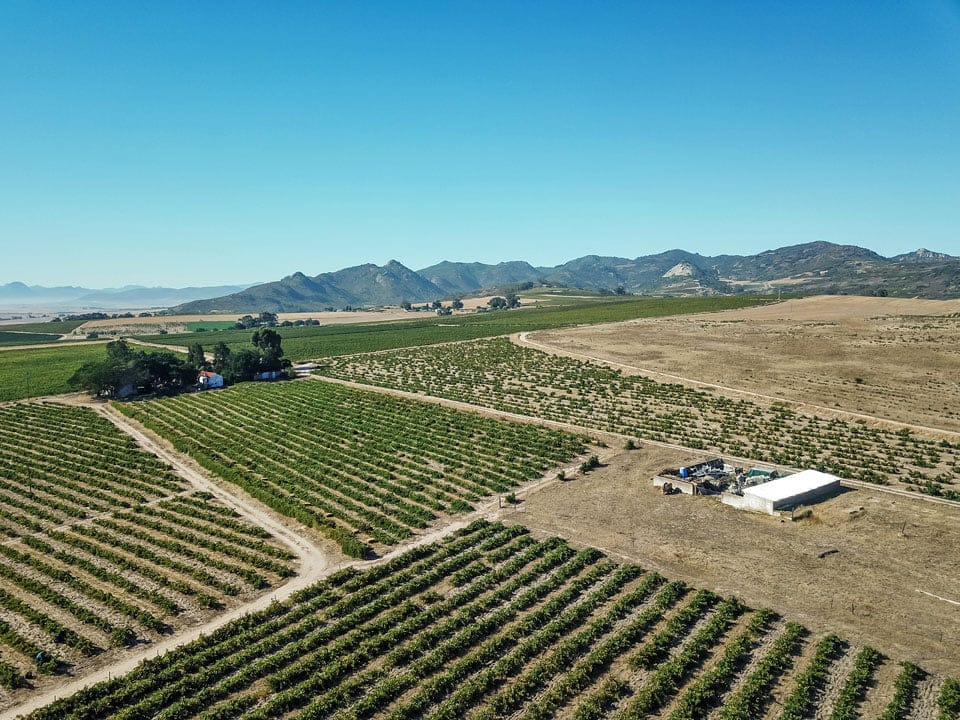Letter to the editor: Saving old vineyards and reducing barriers to entry into the wine industry
By Christian Eedes, 17 October 2022

4

The following received via email from Anthony Hamilton Russell, proprietor of Hemel-en-Aarde Valley property Hamilton Russell Vineyards:
Sometimes a simple idea, new or not, followed by a simple legislative change can have a large and lasting positive impact. And I would like to propose one.
Sometimes a simple idea, new or not, followed by a simple legislative change can have a large and lasting positive impact. And I would like to propose one.
Background:
At the best of times, the wine industry worldwide is one that faces a multitude of challenges. We gamble with nature on a large scale and if this is combined with political uncertainty, economic and exchange rate uncertainty and a small under-resourced, overcrowded, local market the challenges mount further.
Despite these obstacles, many new, resourceful individuals have entered the South African wine industry and added to the almost electric excitement among wine-writers and critics, at the extraordinary quality and value of South African wine. It will only take greater volumes of these top wines to be made, and more makers of them, for this excitement to trickle down to the consumer, internationally and locally. How do we enable this exciting new wave of winemakers to expand and have more significant balance sheets to borrow against for growth?
The typical model for low cost entry into the industry is to find undervalued, often old-vine, grapes in an interesting site, from a farm that is usually struggling to make ends meet and then vinify them in a shared or rented facility. Growth is difficult without an asset to borrow against. Credibility and long-term security are lessened by not owning the source of grapes. The result generally turns out to be a fragmented range of small production wines which may well excite writers and critics, but which are not made in large enough volumes to excite consumers worldwide. The international disconnect between writer and critic excitement and consumer excitement remains significant. And one of the results has been an ongoing South African “wine of origin discount”. Lower international prices for the best South African wines than they deserve.
And from the grape growers’ point of view, what is the incentive to maintain their vineyards if other forms of agriculture prove more profitable? Across the country some of the best vineyards – old and less old – are at risk of being pulled out because of poor returns.
How to calculate grape pricing? It was the famous Californian grape grower, Andy Beckstoffer, who developed an “rule of thumb” in this regard. Take the retail price of the wine made from the grapes and multiply by 100 for the price of the grapes per ton. So a producer of a $100 bottle of Californian Cabernet should have paid $10,000 for a ton of grapes. And that is an American ton. A bottle of South African wine selling for R300 should, based on his rule, be paying R30,000 per ton. There are some rare examples of South African grape growers getting their fair share of the value chain, but not many at all. Compounding this poor pay per ton for the grape grower is the fact that the most exciting wines are often made from older vines with very low yields per hectare.
So many young entrepreneurial, gifted, winemakers struggle to grow and attract international attention and many grape growers struggle to stay in business and consider removing some of South Africa’s most exciting vineyards – or even selling their properties.
Proposal:
1. The government should allow grape growers to sell a single vineyard, planted or resting, or even a few rows of a single vineyard to any wine producer they choose at a price the market would establish. There is a precedent for this in many countries, France being a good example.
2. SAWIS in conjunction with Vinpro could determine the geographic areas where this would be allowed. It is understood that the laws on subdivision of agricultural properties are designed to prevent a proliferation of farms that are too small to be viable. This does not apply to vineyards that make expensive wine.
3. The vineyard land subdivided in this way would have to be used for the growing of grapes only and no buildings would be allowed on the land.
Likely results:
1. The long-term preservation of the best vineyards and the protection of the best vineyard sites against other forms of agriculture.
2. Struggling grape growers would be able to keep their properties and be re-capitalised through the sale of some of their vineyards.
3. Less resourced winemakers would be able to become landowners and would likely have an appreciating asset to borrow against for faster growth. The better the wines, the more their land asset would appreciate.
4. With the much lower cost of entry for vineyard ownership, the industry would have even more small “high-end” producers. You would no longer have to buy and entire property.
5. Overall industry employment would probably increase and there would be additional opportunities for contract vineyard management companies.






Comments
4 comment(s)
Please read our Comments Policy here.